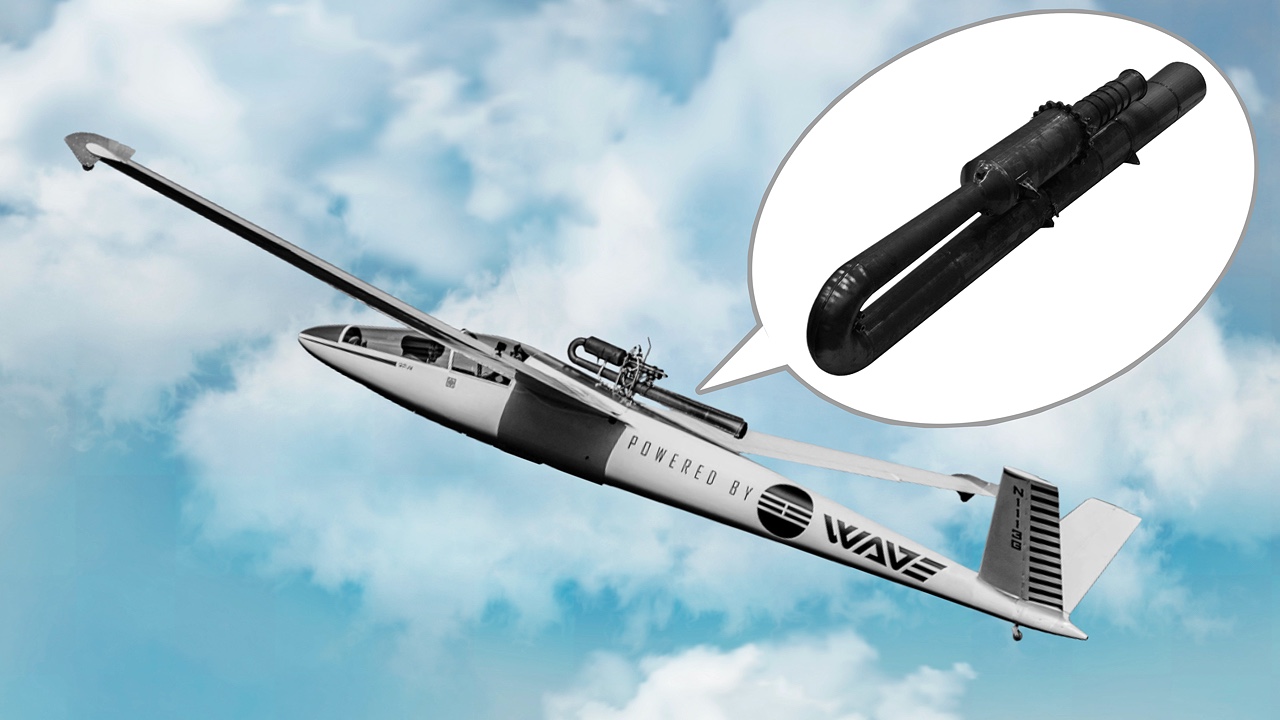
The aviation world is buzzing with excitement over a breakthrough technology that could change how we fly. Enter wave engines—jet engines that don’t rely on spinning blades or turbines. Instead, they use pressure waves to generate thrust, offering a lightweight, simple, and efficient alternative to traditional jet propulsion systems. (Source: Wave Engine Corp.)
From powering drones to potentially transforming larger aircraft, wave engines might be the cleaner, more affordable solution aviation has been waiting for. (Source: New Atlas)
How Wave Engines Work
Wave engines are a completely new approach to jet propulsion. Unlike conventional engines that depend on moving parts like rotating turbines, these engines operate by creating thrust with pressure waves. (Source: Wave Engine Corp.)
Here’s how it works: a mix of fuel and air ignites inside a combustion chamber, causing a rapid rise in temperature and pressure. The resulting hot gases shoot out from both ends of the engine, producing thrust. At the same time, a vacuum effect pulls in fresh air to repeat the process. (Source: Aerospace Tech Review)
This design makes wave engines significantly lighter and mechanically simpler than their traditional counterparts. But simplicity doesn’t mean sacrificing performance. Wave engines are efficient, cost-effective, and adaptable, even capable of running on sustainable fuels like bioethanol-based E85. They can also restart mid-flight—an important feature for unmanned vehicles and other cutting-edge applications. (Source: Wave Engine Corp.)
Real-World Success and Versatility
Wave Engine Corporation has already put its technology to the test. Earlier this year, their J-1 wave engine powered a UAV (unmanned aerial vehicle) weighing about 100 lbs. With thrust levels starting at 50 lbf (222 N) and going up to 250 lbf (1112 N), these engines are versatile enough to support aircraft ranging from small drones to vehicles weighing up to 1,000 lbs. (Source: Wave Engine Corp.)
Fuel flexibility is another standout feature. Wave engines can run on everyday gasoline, kerosene-based jet fuels, and even sustainable options like E85. This adaptability makes them a compelling choice for both military and civilian aircraft. (Source: Wave Engine Corp.)
Wave Engine Corporation’s advancements have also drawn attention from organizations like DARPA, which awarded the company a $2.85 million contract to explore high-performance UAV applications. In fact, their technology even powered the first-ever manned flight using a wave engine in 2020—a significant milestone in aviation history. (Source: Wave Engine Corp.)
What’s Next for Wave Engines?
As the aviation industry continues to prioritize efficiency, affordability, and sustainability, wave engines are poised to play a major role. Their low production cost and ability to burn biofuels make them a smart choice for reducing the environmental impact of flight. (Source: New Atlas)
The next big step? Wave Engine Corporation is already developing a larger model, the K-1, which could generate up to 220 lbf (979 N) of thrust. This opens up opportunities for more substantial aircraft, including a new generation of high-speed VTOL (vertical takeoff and landing) vehicles. (Source: Wave Engine Corp.)
Wave engines have the potential to redefine how aircraft are designed and operated. By lowering costs and simplifying propulsion systems, they could make jet-powered vehicles more accessible than ever before. (Source: New Atlas)
As this technology continues to evolve, it’s likely we’ll see wave engines powering not just drones and small aircraft but also shaping the future of larger commercial and industrial aviation.